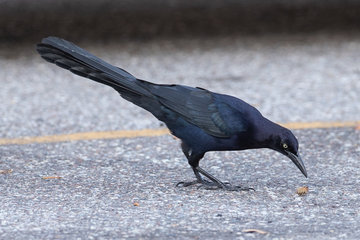A gene for the male sex
Brown algae and animals have taken a similar approach to sex determination
Researchers from the Max Planck Institute for Biology Tübingen broke new ground by demonstrating that an HMG-box gene in brown algae is crucial for determining male sex. This breakthrough significantly expands our understanding of sex-determination mechanisms in eukaryotic organisms. Until now, master sex-determination genes had been identified in only a select number of animals and plants. This study illuminates the evolutionary parallels in developmental pathways between animals and seaweeds, despite their millions of years of independent evolution. It highlights the recurrent use of a shared genetic ‘toolkit’ across distant lineages for vital biological functions. Beyond offering deeper insights into brown algae's reproductive biology, this research explores distant evolutionary convergences.

While most sexually reproducing organisms are often clearly male or female, the genetic regulatory underlying sex determination differs greatly across species. This diversity extends to the seemingly simple appearance of brown algae, which possess intriguing sex-determination mechanisms.
Brown algae are marine, multicellular, photosynthetic eukaryotes. These organisms have evolved several key biological traits independently from plants and animals, such as multicellularity, complex life cycles and sex chromosomes. Given these unique traits, brown algae serve as excellent model organisms for studying the evolutionary aspects of reproduction.
Eukaryotes exhibit diverse sex chromosomes
Mammals have the XX/XY system, where males have an X and Y chromosomes. Similarly, in the ZZ/ZW system observed in birds, fish, and some insects, males typically have both ZZ chromosomes. XX/XY and ZZ/ZW systems occur because animals harbour two copies of their genome during embryonic development, one copy from each parent. These systems contain specific factors that trigger male or female differentiation, with known master sex-determination factors identified on the Y and W chromosomes, respectively. In contrast, the U/V system remains less explored, with only one sex-determining factor identified in algae, mosses and lichens. Fungi, however, don’t rely on special sex chromosomes. They use mating-type genes to determine their sex and who they can reproduce with.
One distinctive feature of brown algae is their adoption of the U/V sex chromosome system. Brown algae determine their sexes in their haploid stage (i.e., with only one copy of their genome), unlike diploid animals that carry two complete sets of chromosomes. Brown algae only carry the male V or the female U chromosome, determining their sex.
Over a decade ago, under the leadership of Susana Coelho, researchers identified a sex-specific region in the male V chromosome of the brown algae, which contains a gene encoding for an HMG-box protein that they later named MIN (for Male Inducer). The HMG-box, a DNA-binding domain, is universally present across eukaryotes in chromatin-associated proteins and transcription factors, including in the sex-determining factor SRY found in humans and the mating-type determination factors in fungi. At the time, the tools and methodologies available could not prove whether MIN triggers the male developmental pathway in these organisms.
Insights from Crispr/Cas genetic manipulation
“In their natural habitat, brown algae gametes engage in a mesmerizing mating dance,” explained Rémy Luthringer, an expert in algae cultivation and the head of the algal culture facility at the Max Planck Institute for Biology Tübingen. “Female gametes fix quickly onto substrates and release a pheromone, like a chemical signal, in seawater to attract males. Male gametes actively swim using two flagella in progressively closer circles around the females, attracted by their ‘perfume’.”
With the advent of the Crispr/Cas technology, often dubbed ‘gene scissors’, the researchers could precisely target and edit the genetic material of these brown algae. They used this tool to test the biological function of MIN by generating mutants with a loss of function. The result was clear: “The intricate male gamete mating dance was absent in the Crispr mutant lines. Meaning that in the absence of MIN, the gametes became completely insensitive to the female pheromone.”
Susana Coelho, the Director of the Algal Development and Evolution Department, noted, “When we knocked out MIN, the sex-determinant gene in brown algae, we did not observe a sex reversal. Instead, the males became asexual. This is because they are missing the complementary chromosome, the female U chromosome. This suggests a female-inducer factor on the U chromosome is yet to be discovered.” Through these genetic experiments, the researchers shed light on the intricate mechanisms governing male sex determination in brown algae. “Identifying an HMG-domain gene as the brown algal master sex factor reveals that animals and seaweeds have independently converged on the same solution for determining male sex,” said Coelho.
A shared genetic toolkit
Delving into the evolutionary timeline, the last common ancestor shared between algae and animals was unicellular and lacked the sex chromosomes distinct to these two groups of organisms. Vikram Alva, project leader in Protein Bioinformatics, clarified: “The origin of the HMG-box domain can be traced back to the last eukaryotic common ancestor, whereas MIN evolved later in the common ancestor of brown algae.”
Sex-determination factors in brown algae, fungi, and mammals share a homologous HMG-box domain, indicating they originate from shared ancestral genetics. “While MIN and SRY are homologous, they are not orthologous; they emerged after the brown algae and animal lineages had already diverged. Their functional similarities serve as an example of convergent evolution, whereby the HMG-box domain adapted a similar role across organisms despite their separate evolutionary paths,” emphasized Alva.
Simply put, it is as if Lego bricks from the same box were used to build different genes. The Lego bricks have functional similarities and common lineage, but the results differ. “And in this case, animals and brown algae independently used similar building blocks to reach the same result, male sex determination,” clarified Josué Barrera-Redondo, a Humboldt research fellow in Coelho’s team. Future endeavours for these researchers will include identifying the master gene governing female sex determination in brown algae and understanding their asexual phenotype when they lack the U chromosome.
Pinpointing this pivotal MIN gene allows researchers to delve deeper into the evolutionary dynamics shaping sex-determination mechanisms across the tree of life, going beyond the traditional animal and plant models. This research direction has the potential to provide a more comprehensive picture of the genetic mechanisms underlying sex determination in brown algae, contributing to our broader understanding of evolutionary biology and developmental regulation.












